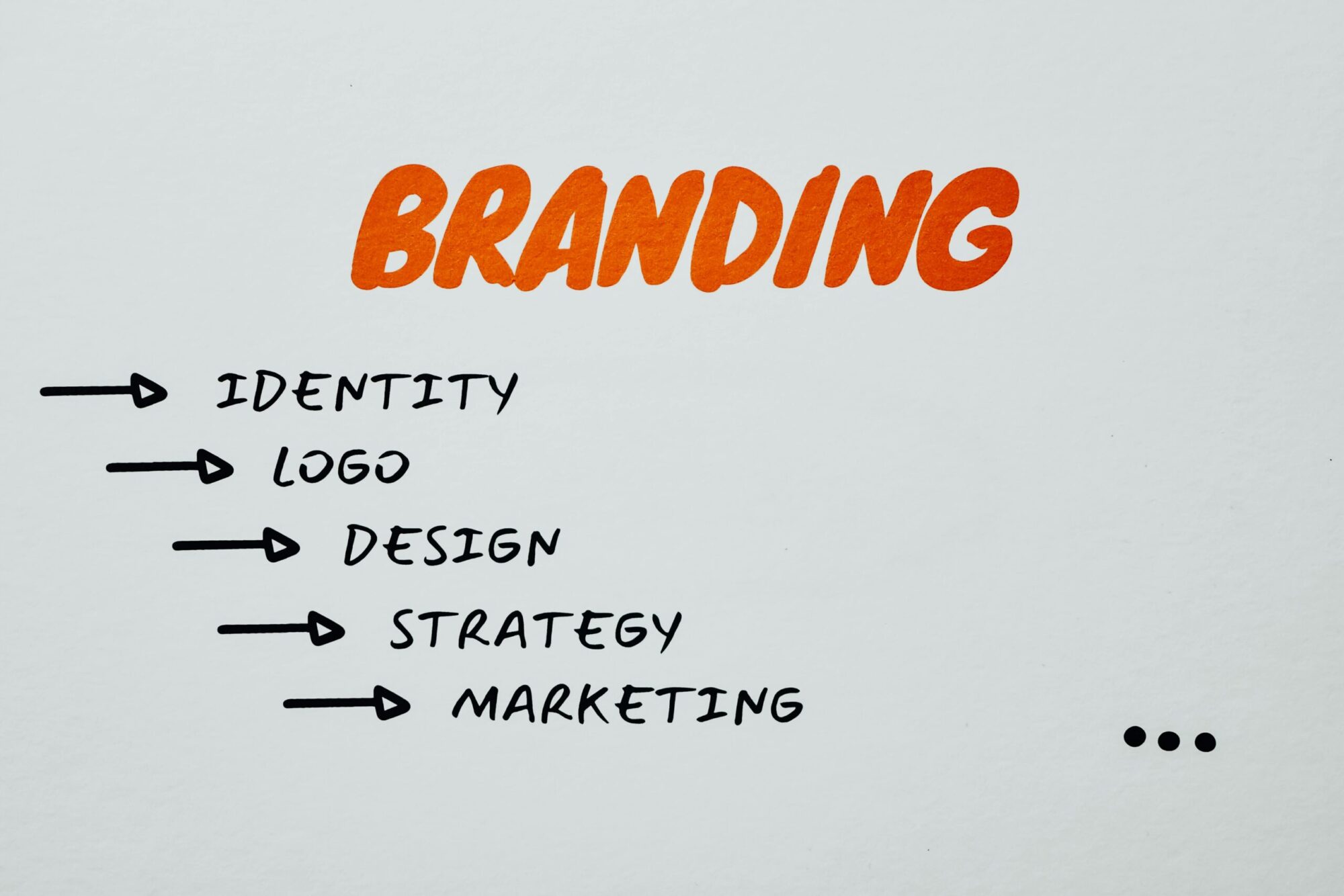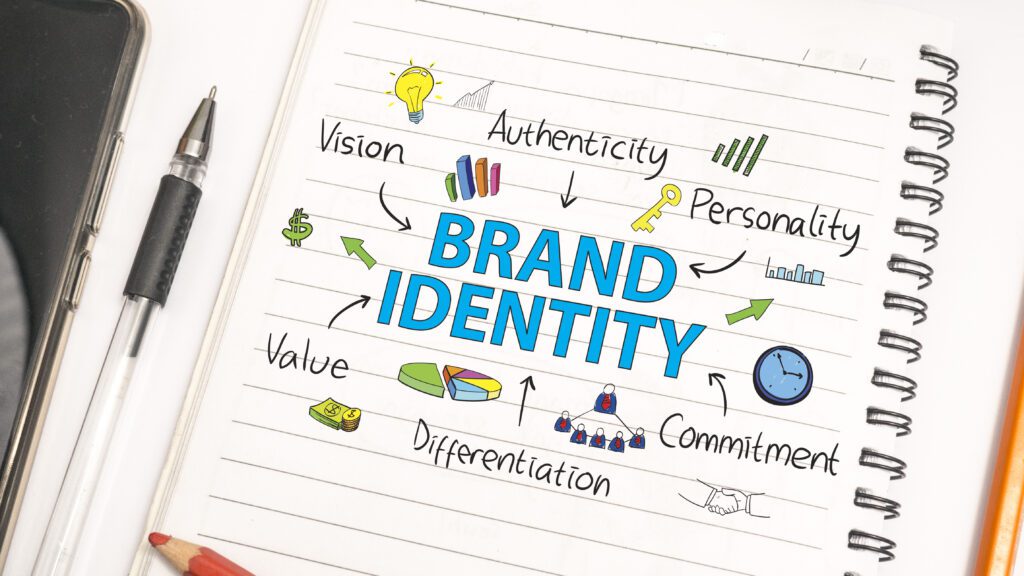Overview
In today’s overcrowded and competitive market, it is more crucial than ever to stand out from the crowd. Capturing your audience’s attention and developing a strong bond with them is what makes or breaks your brand identity. In this blog post, we will be giving you some insights and tips on how best to go about creating an enticing brand identity that distinguishes you from the pack and resounds with your target audience. Fasten your seat belts as we embark on a branding lesson that will put you on the path of success in a cut-throat market.
Introduction to Brand Identity

Crafting Your Brand Identity: Tips for Success in a Competitive Market
Standing out among other players in fast-paced digital marketing space is not an easy task. In order to have their hearts melt down like butter, capture their minds or even force their eyes glued to the screen, it is important for marketers to embrace having strong brands. Aspiring start-ups or even organizations wishing to rebrand should know about this phenomenon of branding power. Come join us as we learn how to craft an interesting brand id that speaks directly only to those who need it most in the flooded market of today.
Understanding the Importance of Branding in a Competitive Market
Branding sets you apart from the rest in a competitive market where companies are fighting for consumer attention. Branding is not just a logo or color scheme, but it’s how customers perceive and feel about your business. Your target audience can trust, be loyal to, and believe in you if only you have strong branding.
When given different choices, consumers select those brands they have seen before which impact them emotionally. This emotional bond is what distinguishes successful brands from their rivals. Competitive branding strategies can communicate your values, mission statement and unique selling proposition thereby helping to attract and keep clients.
Branding also ensures that all touchpoints are consistent including websites, social media channels and packaging. In this way, your unified brand experience gets embedded into customer minds hence promoting brand recall. In today’s digital world characterized by tough competition and short attention spans; investing in strong branding is essential for long-term success.
How to Make a Strong Brand Identity
It is imperative that in the contemporary market, one creates a strong brand identity. For starters, one has to identify the target audience by having knowledge about their demographics, preferences and behaviors so as to resonate well with them.
The second step is finding your brand’s personality; do you want it to come across as bold and energetic or sophisticated and elegant? Your brand character should be consistent with what you would like people to think of you.
Establishing uniqueness from rivals through creating a distinctive value proposition. A clear communication concerning why your customers should select you over others and what sets your brand apart.
Design visual elements (colour schemes, logos, fonts etc.) which reflect your brand’s personality and appeal visually to the target audience. The consistency in visuals on all platforms strengthens consumer trust while enhancing brand recognition.
In conclusion, this helps create an unambiguous experience of the company for its patrons in every channel. When customers encounter your brand online or offline, they feel more comfortable and have confidence because they are familiar with it.
Defining Your Target Audience
Understanding your target audience is crucial in building a successful brand identity. Start by conducting thorough research to identify who your ideal customers are. Consider factors such as demographics, behaviors, interests, and pain points.
Create detailed buyer personas that represent different segments of your target market. Dive deep into understanding their needs, preferences, and challenges. This will help tailor your branding efforts to resonate with them effectively.
Utilize data analytics tools to gather insights about your audience’s online behavior and engagement with your brand. This information can guide you in crafting personalized marketing strategies that speak directly to their interests.
Always keep an open line of communication with your audience through surveys, feedback forms, and social media interactions. Listen attentively to their feedback and adjust your branding approach accordingly.
By defining your target audience accurately, you set the foundation for a strong brand identity that connects authentically with the people who matter most to your business.
Identifying Your Brand Personality
Your brand personality is the heart and soul of your business – it’s what sets you apart from the competition. To identify your brand personality, start by defining adjectives that represent how you want your brand to be perceived. Is it playful, sophisticated, or bold? Consider the emotions you want to evoke in your audience.
Think about your target market and what resonates with them. Your brand personality should align with their values and aspirations. It’s all about creating a connection on a deeper level. Look at successful brands for inspiration but remember to stay true to who you are as a company.
Once you’ve pinpointed your brand personality, ensure that every aspect of your branding reflects it – from your messaging to visuals. Consistency is key in building a strong and recognizable identity. Embrace authenticity and let your unique personality shine through in everything you do!
Crafting Your Unique Value Proposition
Crafting Your Unique Value Proposition is a critical step in establishing your brand identity. It sets you apart from competitors by highlighting the specific value you offer to your target audience. To create a compelling value proposition, focus on what makes your product or service different and valuable to customers.
Start by identifying the key benefits of your offering and how it solves a problem or fulfills a need for your target market. Communicate this unique value clearly and concisely in a way that resonates with your audience. Your value proposition should be memorable, impactful, and easy to understand.
Consider what sets you apart from others in your industry – whether it’s superior quality, innovative features, exceptional customer service, or competitive pricing. Use this differentiation to craft a message that speaks directly to the pain points of your ideal customers.
Your unique value proposition should be authentic and align with the core values of your brand. It should evoke emotion and connect with consumers on a deeper level beyond just product features. By honing in on what makes you special, you can effectively communicate why customers should choose you over competitors.
Designing Your Visual Elements (logo, colors, fonts)
When it comes to designing your visual elements for brand identity, consider your logo as the face of your business. It should be memorable and reflective of your values. Choose colors that resonate with your target audience – they evoke emotions and associations.
Fonts play a crucial role in conveying the personality of your brand; whether sleek and modern or traditional and reliable. Consistency is key across all visual elements – from website design to social media graphics.
A successful example is Coca-Cola, known for its red color scheme symbolizing energy and passion, paired with a classic cursive font evoking nostalgia. On the other hand, tech giant Apple opts for minimalist design with clean lines and simple fonts representing innovation.
Remember, visually appealing branding creates instant recognition and connection with consumers in today’s digital marketing landscape.
Establishing Consistency across all Platforms
Consistency is key when it comes to establishing a strong brand identity across all platforms. Whether it’s your website, social media profiles, or marketing materials, maintaining a cohesive look and tone helps build trust with your audience.
Start by defining brand guidelines that outline how your logo, colors, fonts, and messaging should be used consistently across different channels. This ensures that no matter where someone interacts with your brand, they’ll recognize it instantly.
Regularly audit your online presence to ensure that all platforms reflect the same brand personality and values. From the language you use to the visuals you share, everything should align with your overarching brand identity.
By maintaining consistency in your branding efforts, you not only reinforce brand recognition but also create a seamless experience for customers as they navigate through various touchpoints. Remember, consistency breeds familiarity and trust in the competitive digital marketing landscape.
Case Studies: Successful Brands and Their Unique Identities
Let’s delve into the world of successful brands and uncover their distinct identities that set them apart in the competitive market.
Take Apple, for instance – known for its sleek design, innovation, and user-centric approach. The brand appeals to tech-savvy individuals seeking cutting-edge products with a touch of elegance.
On the other hand, Nike exudes empowerment, athleticism, and determination. Through impactful marketing campaigns and iconic swoosh logo, Nike has solidified its position as a symbol of inspiration in the sports industry.
Coca-Cola stands out with its timeless red branding and message of happiness and unity. It has successfully created an emotional connection with consumers worldwide through consistent storytelling.
Each of these brands showcases how a strong identity can resonate with target audiences on a deep level. By studying these case studies, we can extract valuable insights on building enduring brand identities that leave a lasting impression.
Maintaining and Evolving Your Brand Identity
Maintaining and evolving your brand identity is an ongoing process that requires dedication and adaptability. As market trends shift and consumer preferences change, it’s crucial to stay relevant and connected to your audience. Regularly revisiting your brand strategy can help ensure that your messaging remains consistent and resonates with your target demographic.
One way to maintain your brand identity is by actively engaging with customers through social media platforms. By listening to feedback, addressing concerns, and showcasing new products or services, you can strengthen the relationship between your brand and its followers.
By continuously evaluating the effectiveness of your branding efforts and being willing to adapt as needed, you can position your brand for long-term success in a dynamic digital marketing landscape.
Conclusion
As you continue to navigate the ever-evolving landscape of digital marketing, remember that your brand identity is a powerful tool that can set you apart in a competitive market. By defining your target audience, identifying your brand personality, crafting a unique value proposition, designing cohesive visual elements, and maintaining consistency across all platforms, you can build a strong foundation for success.
Look to successful brands for inspiration and learn from their strategies. Remember that brand identity is not static; it requires ongoing maintenance and evolution to stay relevant and resonate with your audience. Embrace the journey of shaping your brand identity and watch as it helps you stand out in the crowded digital marketplace. Stay true to your values, be authentic in your messaging, and let your unique identity shine through in everything you do. Branding isn’t just about making a name for yourself – it’s about creating an emotional connection with your audience that fosters loyalty and trust. So go forth with confidence and craft a brand identity that speaks volumes about who you are as a business!
